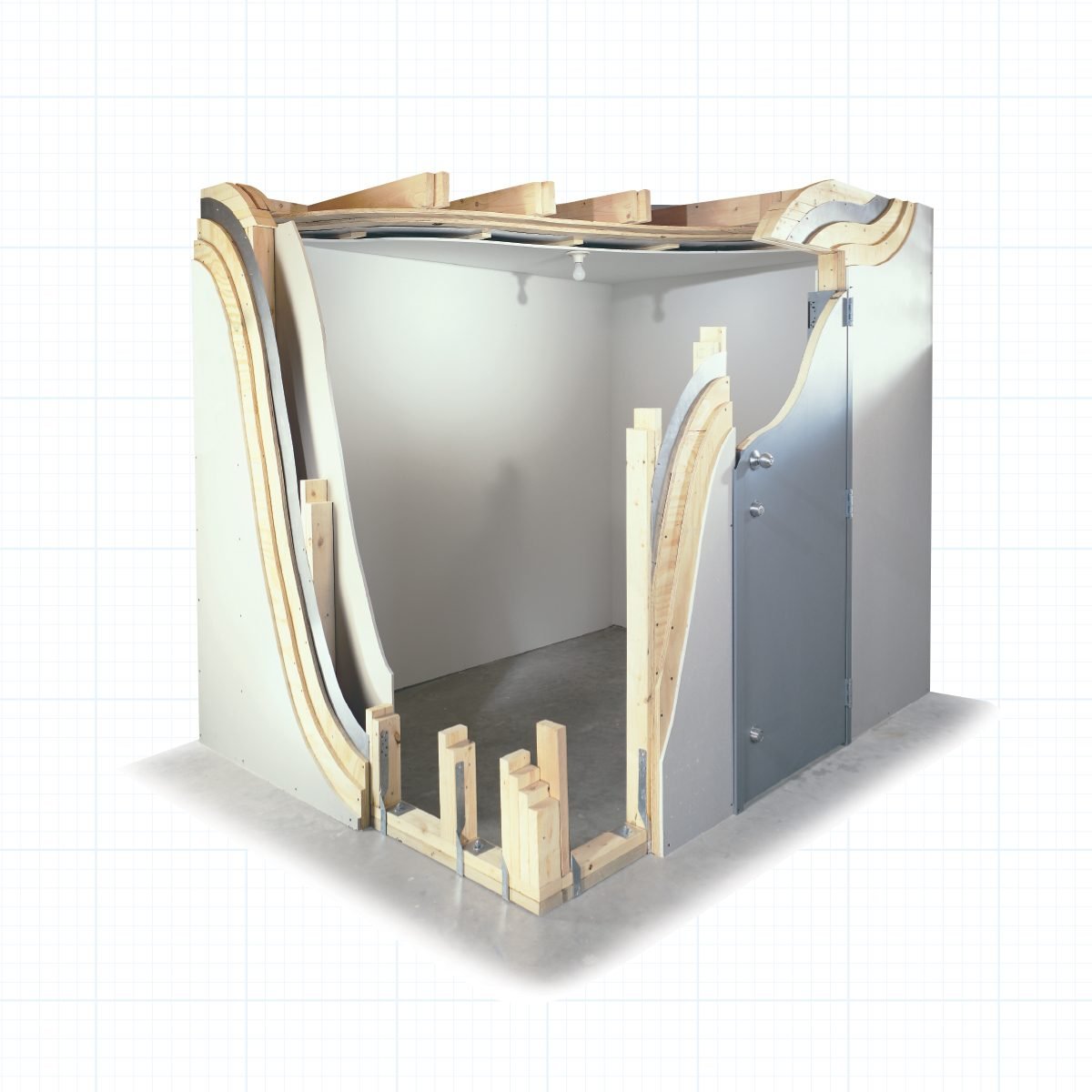Why You Need a Storm Shelter

If you live in “Tornado Alley” in the panhandle of Texas or are worried about violent storms with high-velocity winds, building storm shelters (also known as a “safe room”) should bring you a little more peace of mind. When faced with a severe storm, most people go to an interior room as you did or head for the cellar and hope for the best.
Unfortunately, even those areas aren’t designed to withstand extreme winds and the wind-driven debris that comes with them. A drywalled 2×4-framed room is no match for a 2×4 traveling at 100-plus miles an hour, even if it’s in the middle of a house. “Force 5” tornadoes or C5 hurricanes (the two most serious storms) can pack winds of more than 200 mph—enough to blow a well-built house right off its foundation. So a tornado shelter can pay off, especially if you live in a vulnerable high-wind zone area.
A tornado shelter won’t cost a fortune, either. A little elbow grease and the building materials will all but guarantee your family’s injury-free survival in any storm that comes down the pike.
Keep in mind that a safe room can be more than just a storm shelter. Within the house, the room can do double-duty as a storage room, walk-in closet, bath or pantry. Outside the house, it can function as a yard or storage shed. A bonus is that it doubles as a vault for valuables, guns, documents and expensive equipment.
Storm Shelter Design Options
Storm shelter designs are engineered to provide a room that’s completely independent of the house structure and bolted down to a concrete slab. In addition, the room needs a tough, impact-resistant shell to protect occupants from the wind-blown debris that accounts for most storm fatalities and injuries.
We show a wood/steel design here, but other equally effective designs use materials like poured reinforced concrete, reinforced concrete block, fiberglass and welded solid steel. You’d have to hire a contractor or buy a kit to construct these styles, however.
Another option is a prebuilt one-piece steel or modular cast concrete unit that can be dropped into the ground or into a home under construction. Even if the house disintegrates around the safe room in the teeth of a tornado, you’ll be snug and safe inside (but scared to death!).
Safe rooms and storm tornado shelters are still embryonic in design, but the room we show below is the sturdiest, most DIY-friendly design we found. It’ll fit in most basements, large garages or even outside on a separate slab. For outside locations, build the structure as shown and add a roof and siding.
Designing a Storm Shelter
Safe rooms or storm shelters can be built any size you want, as long as you build them with the specifications described in this FEMA booklet. When you’re planning the size, think about the available space, the number of people you expect to protect, the secondary purpose the room will serve and your budget.
The sandwich skin of the storm shelter’s walls and ceiling has two layers of plywood oriented in opposite grain directions. The plywood will absorb most of the impact of flying objects, and a layer of 14-gauge steel on the “safe side” (interior side) of the room further blocks debris.
When possible, the sandwiched skin should be installed on the outside surface of the studs. Construction will be easier because you’ll be able to run wire and install electrical boxes without cutting through steel. Plus, you’ll be able to fasten an optional cosmetic layer of drywall to the plywood on the outside and to the studs on the inside. A steel door mounted in a steel frame for a storm shelter with three deadbolts located opposite heavy-duty hinges will let only people and pets into the room, not door-busting debris.
Did you miss our previous article...
https://rsssuperfeeds.com/life-hacks/the-5-best-stone-bath-mats-are-antimicrobial-quickdrying-and-easy-to-clean






